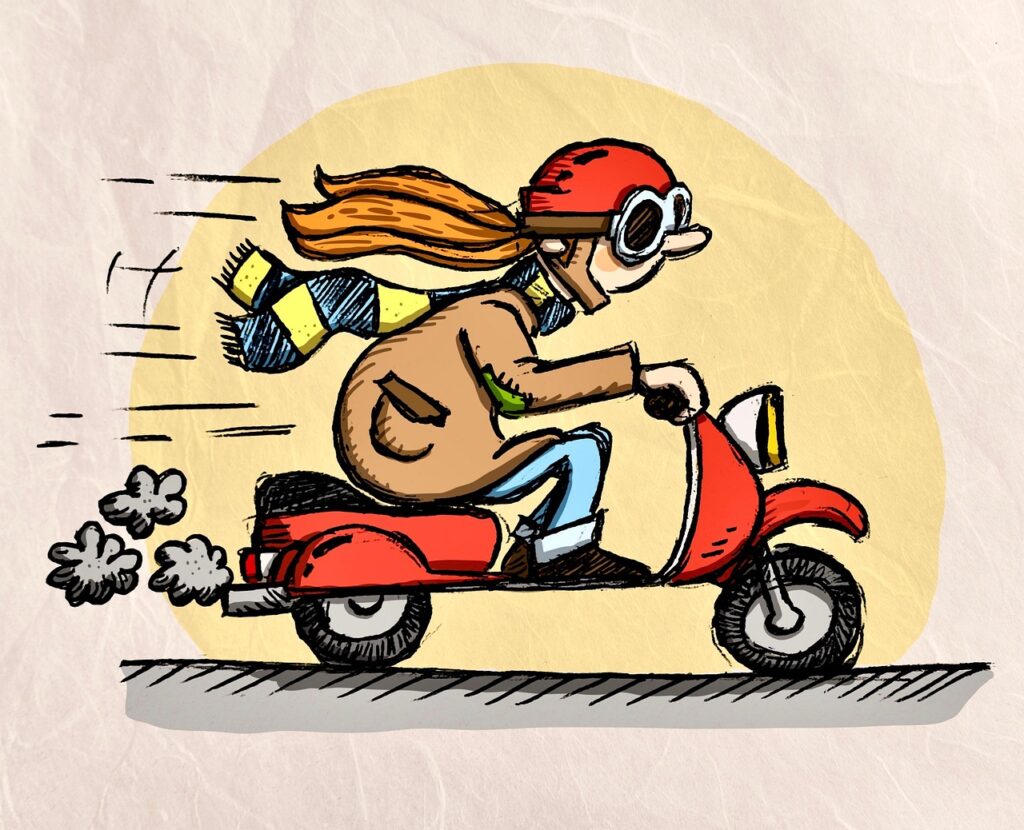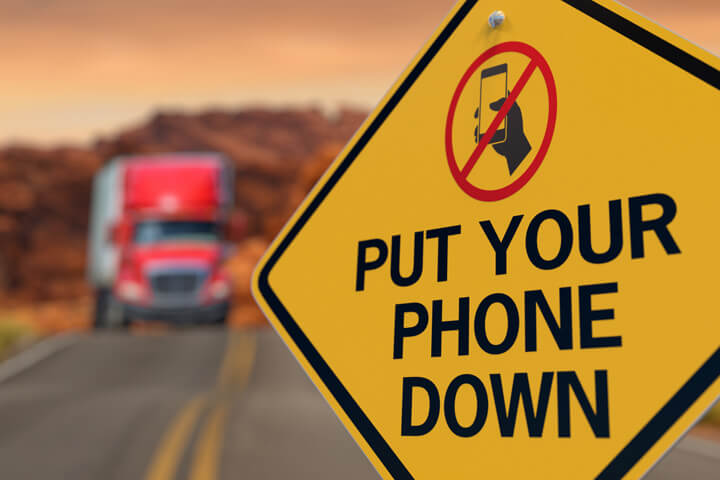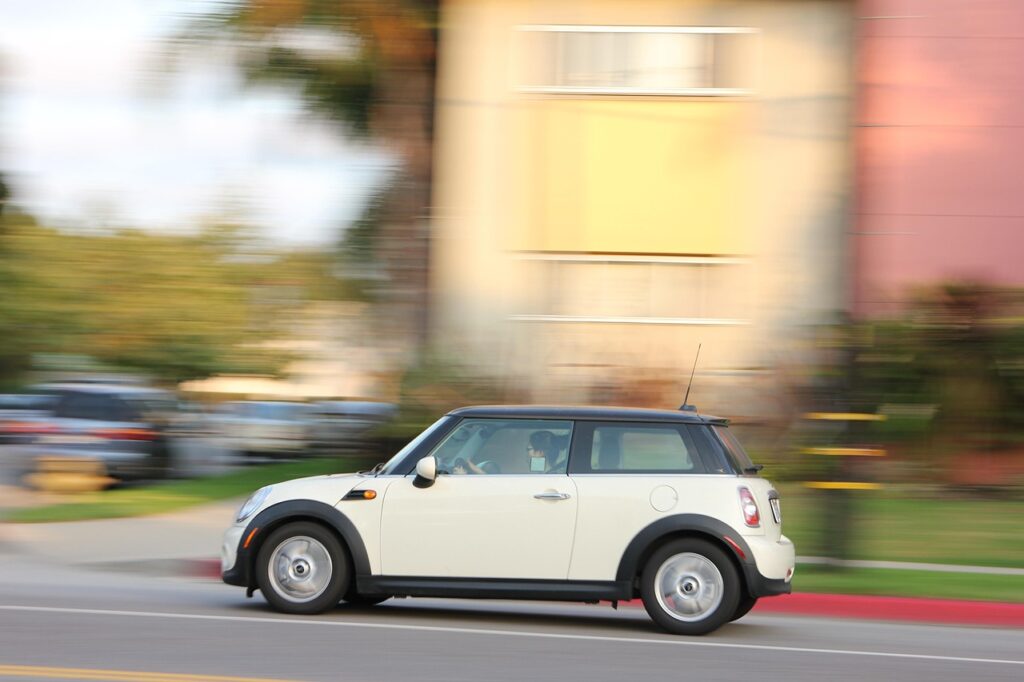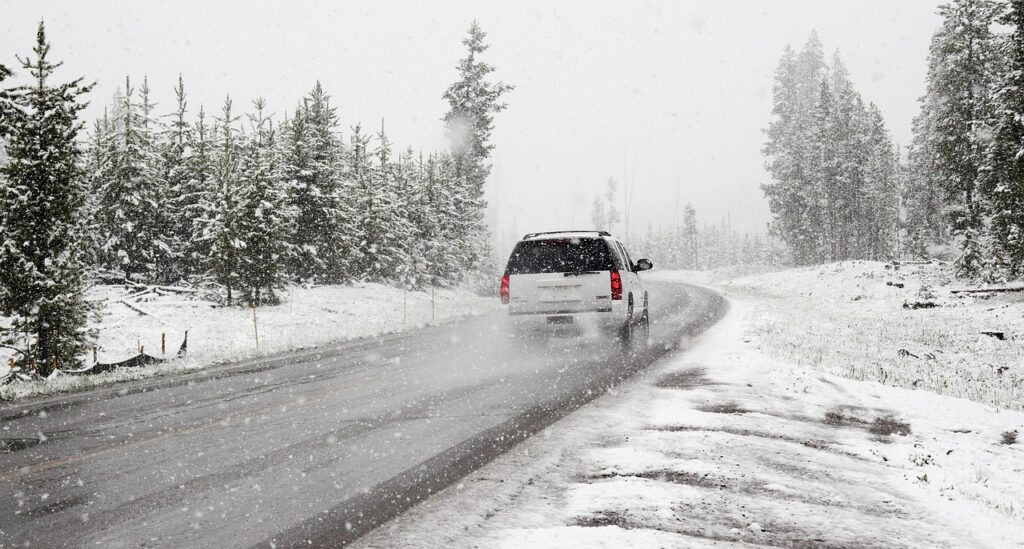
The serene beauty of a fresh blanket of snow often belies the treacherous conditions it creates for motorists. While a picturesque snowfall can transform landscapes, it simultaneously introduces a myriad of hazards on the road, turning routine commutes into white-knuckle experiences. The US Department of Transportation reports that nearly 750,000 weather-related crashes occur each year, leading to over 3,800 fatalities and more than 268,000 injuries. These sobering statistics underscore the critical need for heightened caution and preparedness when the weather takes a turn for the worse.
Heavy snow creates obvious hazards: reduced traction, limited visibility, and the insidious presence of black ice, especially when temperatures hover around freezing. For those living in regions like Michigan, where winter conditions are notoriously harsh, understanding how to navigate snow-covered roads is not just a recommendation—it’s a matter of survival. Between 2015 and 2019 alone, Michigan roads saw 220,526 winter-related crashes, including 3,101 incidents with severe injuries.
This comprehensive guide, drawing on insights from experts like State Farm Insurance’s Dave Phillips and Kelley Blue Book’s Micah Muzio, aims to equip you with the knowledge and practical strategies to drive safely through heavy snowfall. Whether you’re a seasoned winter driver or facing your first serious snowfall, these proven techniques and essential preparations will empower you to tackle challenging conditions with confidence. From foundational precautions to mastering the art of skid recovery, we’re breaking down the most vital advice to keep you and your loved ones safe on the wintry roadways.
1. **Stay Home**The simplest and often most effective advice for driving safely in heavy snowfall is straightforward: if the weather is bad, stay home. This isn’t just a suggestion; it’s a critical safety measure, particularly when conditions are severe. Driving in wintery weather demands extra effort and presents inherent risks that can often be entirely avoided by delaying or cancelling non-essential travel.
When heavy snow descends, road conditions can deteriorate rapidly, becoming unpredictable and dangerous. Tyre grip is hugely reduced on icy roads, and braking distances are much longer, increasing tenfold on ice compared with a dry road. Even if you manage to avoid an accident, your vehicle could become stuck, potentially leading to a long and unpleasant walk home, or even leaving you stranded in hazardous conditions for hours.
Consider the domino effect: traffic congestion is highly likely to worsen, and while you might be a cautious driver, the driver in front of you might not be, or could easily get stuck. This creates a cascade of potential problems. Experts universally agree that staying off the roads is the best course of action when faced with significant snow or ice, limiting travel strictly to essential journeys only, and sticking to main roads that have been gritted if travel is unavoidable.
Read more about: Beyond Genetics: Unlocking the 15 Surprising Habits of People Who Thrive Past 100

2. **Thoroughly Remove Snow and Ice from Your Vehicle**Before you even think about turning the ignition in heavy snowfall, a thorough cleaning of your vehicle is non-negotiable. It’s not merely about personal visibility; flying chunks of snow and ice from your car can become dangerous projectiles for other drivers, creating serious hazards on the road. In several states, failing to clear your vehicle is not just irresponsible, it’s also against the law, with some regions enacting specific statutes regarding snow and ice removal.
Pennsylvania, for instance, mandates that drivers clear snow and ice from the hood, roof, and trunk within 24 hours of a storm and prior to driving. Vermont considers failing to clear snow and ice from your vehicle’s roof as “negligent driving,” potentially leading to fines up to $500 for a first offense. These regulations highlight the serious implications of neglecting this crucial step. Always check your specific state’s requirements to ensure compliance and, more importantly, safety.
Begin by starting your car and setting the defroster to maximum fan speed and high temperature to assist in melting internal and external ice. Use a brush to remove snow from the roof, hood, trunk lid, and all windows, ensuring an unobstructed view in all directions. For stubborn ice, use a scraper. A crucial “PRO TIP” from experts: never use hot water on your windshield, as the sudden temperature change can cause the cold glass to crack, turning a simple task into an expensive problem.
Don’t overlook what Trevor Spedden, a Vermont resident, refers to as “fenderbergs”—nasty clumps of snow and ice that accumulate under fenders and in wheel wells. These can prevent tires from turning freely and, as one of his friends experienced, can even damage a car’s bumper, or at the very least, cause premature tire wear. Ensure the inside window glass is clean, and verify your rear-window defroster is operational, being careful not to damage its wires during cleaning. Your goal is maximum visibility and protection for your vehicle.
Read more about: Revitalize Your Ride: 12 Game-Changing Interior Mods to Make Your Car Look Years Newer for Less
3. **Decrease Speed and Increase Following Distance**When driving through heavy snowfall, two principles become paramount: dramatically decreasing your speed and significantly increasing your following distance. Winter driving is all about slowing down and creating ample space around your vehicle – both in front and to the sides. This allows for crucial extra time to react to the unpredictable hazards that snow and ice invariably present.
The reason for this extreme caution lies in the drastically altered traction conditions. Stopping a vehicle on snowy or icy roads can take up to 10 times longer than under normal conditions. This tenfold increase in braking distance necessitates a proportionate increase in the gap between your vehicle and the one ahead. Even if the temperature is just above freezing and no visible ice is present, remember that tires grip less efficiently in cold conditions, demanding extra care.
Lower your speed to specifically account for the poor traction, and avoid pressing the accelerator pedal with full throttle when driving in sleet, ice, and snow. Gentle, gradual acceleration is key to maintaining grip. Moreover, be especially wary of bridges and overpasses, which are notorious for freezing first and often harbor black ice, making them particularly dangerous stretches of road. Even treated roads can have icy patches, particularly in the early morning or after sunset when melted snow refreezes.
In fact, Michigan law empowers police to issue tickets to drivers traveling at unsafe speeds, even if those speeds are below the posted limit, if road conditions demand slower driving. Always adhere to a “reasonable and appropriate” speed for the prevailing weather conditions, prioritizing safety over perceived efficiency. This proactive approach to speed and spacing is your best defense against accidents in heavy snowfall.
Read more about: Mechanic’s Urgent Alert: The 14 Engine Symptoms That Spell Disaster for Your Car

4. **Minimize Driving Distractions**While minimizing distractions is crucial for safe driving in any conditions, it becomes exponentially more vital when navigating heavy snowfall. The inherent unpredictability and heightened risks of winter roads demand your undivided attention. Engaging in activities like talking on your phone, listening to a podcast, eating, or even applying makeup can divert your focus for mere seconds, but those few seconds of inattention can lead to serious accidents in hazardous weather.
As Dave Phillips, senior public affairs specialist at State Farm Insurance, aptly states, “You really need to focus your attention more on what is going on out that windshield when the weather is bad.” The risk of an accident dramatically increases when snow and ice blanket the streets. This necessitates not just caution and vigilance regarding your own driving, but also a keen awareness of other drivers on the road who may not be exercising the same safe driving principles.
Your peripheral vision and immediate responsiveness are critical assets in detecting sudden changes or impending hazards that are often obscured by falling snow or reduced visibility. Every flicker of attention away from the road diminishes your capacity to react swiftly to a patch of black ice, a sudden skid from another vehicle, or an unexpected obstacle. Therefore, commit to keeping both hands on the wheel, eyes on the road, and your mind entirely focused on the task of driving safely through the snowfall.
Read more about: A Comprehensive Consumer Report: Honda Civic vs. Toyota Corolla Fuel Efficiency in 14 Real-World Tests

5. **Understand and Utilize AWD/4WD (with appropriate tires)**Many modern vehicles are equipped with all-wheel drive (AWD) or 4-wheel drive (4WD) systems, which can certainly assist in navigating snow, sleet, and ice. These systems are designed to transfer grip to where it’s needed, providing enhanced traction when accelerating or climbing inclines. However, it’s imperative to understand that AWD or 4WD is not a universal solution for safe winter driving, and certainly no replacement for cautious habits.
As Kelley Blue Book’s Lyn Woodward wisely points out, “Confidence is one thing. Blind dependence is another.” She stresses that tires are the “ONLY touchpoint between you and the road,” making their quality and type paramount. Micah Muzio, also from Kelley Blue Book, reinforces this, stating that “Drivers should only feel as confident as the tires those systems are connected to.” He explains that AWD and 4WD do absolutely “zero to improve braking ability on snow and ice.”
If you live in an area where snow is common, investing in winter tires is highly recommended. These specialized tires offer significantly more grip and can substantially increase performance in icy conditions, whether or not your vehicle has AWD or 4WD. They are designed to operate effectively in cold temperatures, providing better traction, handling, and crucially, shorter braking distances, which are all vital when faced with heavy snowfall and potential ice.
It’s also important to be familiar with your vehicle’s specific system. As Muzio notes, “Most crossovers have open differentials front and rear. When one tire starts slipping, an open differential can’t easily send power to the other tire. Meaning the vehicle won’t necessarily be able to climb steep, slippery roads.” Conversely, a torque-vectoring AWD system or 4WD with locking differentials offers much greater ability to get power to the ground. Ensure your tires are well-maintained and properly inflated before a storm, and remember Muzio’s anecdote about helping a driver activate 4WD, emphasizing that knowing how to engage and use your system correctly is key.
6. **Maintain a Full Tank of Gas or High Electric Charge**One of the most practical and often overlooked preparations for driving in heavy snowfall is ensuring your vehicle’s fuel tank is at least half-full, or your electric vehicle’s battery is at least 80% charged. This isn’t merely about having enough fuel to complete your journey; it’s a critical safety measure against freezing fuel lines and, more importantly, provides a vital reserve for staying warm if you become stranded in severe winter weather.
If you find yourself stuck for hours in bumper-to-bumper traffic during a snow, sleet, or ice storm, or worse, stranded off the road, having ample fuel or charge means you can periodically run your engine and heater to stay warm. This can be the difference between discomfort and a potentially life-threatening situation. The warmth provided by your vehicle acts as temporary shelter and significantly reduces the risk of hypothermia until help arrives.
For electric vehicle owners, understanding which systems consume the most battery charge is essential. Blasting the heat, for instance, can significantly deplete your range. Instead, utilize seat warmers if equipped, and use other systems sparingly to preserve battery power. Proactive charging and mindful usage of onboard amenities are key to ensuring you have enough power for emergencies, especially when venturing into rural areas with spotty cell phone service where getting help might take longer.
Read more about: 15 Road Trip Hacks That Will Save Your Sanity and Your Wallet

7. **Carry and Use Sand (or Cat Litter) for Traction**Despite all precautions, getting stuck in heavy snow is a common winter occurrence. When your tires lose traction and you find yourself spinning your wheels, a simple and highly effective solution is readily available: sand or cat litter. Carrying a bag of either in your vehicle can be a literal lifesaver, providing the immediate grip needed to free your car from a snowy predicament.
If your car gets stuck, the first step is to straighten your wheels. Then, carefully place a generous amount of sand or cat litter directly under the drive wheels – these are the wheels that receive power from the engine. Once the traction material is in place, accelerate very slowly and gradually. The goal is to provide just enough grit for the tires to catch, propelling your vehicle forward or backward out of the snow.
Crucially, resist the urge to vigorously spin your tires. While it might seem intuitive, rapid tire spinning is counterproductive. It only serves to dig your wheels deeper into the snow, creating a deeper rut and worsening your situation, making it far more difficult to regain traction. Instead, a gentle rocking motion – alternating between a very slight forward and reverse gear if possible – can sometimes help, but avoid creating deep ruts. The key is smooth, controlled application of power with the aid of your traction material.

8. **Educate Your Teen Drivers on Driving in Snow**For many new drivers, the initial lessons and practical experience are gained exclusively on dry pavement. This foundational learning, while crucial, often leaves a significant gap when winter conditions suddenly descend. When heavy snowfall transforms familiar roads into treacherous landscapes, the skills acquired in fair weather may prove insufficient to handle the unique challenges of reduced traction and unpredictable surfaces. Preparing young, inexperienced drivers for these conditions is not merely an option but a vital responsibility that can prevent dangerous situations.
Experts, such as Dave Phillips, senior public affairs specialist at State Farm Insurance, strongly advocate for proactive training. He suggests that before allowing teen drivers to navigate slippery streets independently, parents or guardians should take them to a safe, snow-covered parking lot. This controlled environment provides an invaluable opportunity for hands-on experience without the pressures and hazards of live traffic, allowing for focused learning and skill development.
In this controlled setting, teens can practice a range of essential winter driving techniques. This includes demonstrating and repeatedly practicing proper braking on slick surfaces, understanding how steering inputs change when traction is compromised, and mastering the delicate touch required for accelerating and decelerating smoothly in snow and ice. The goal is to build muscle memory and confidence, enabling them to react instinctively and correctly if their vehicle begins to slide or lose control in real-world conditions. This foundational practice is instrumental in turning potentially terrifying moments into manageable situations.
By engaging in these practical exercises, teen drivers can gain an intimate understanding of how their vehicle behaves differently in snow and ice, recognizing the subtle cues that indicate a loss of traction. This preparatory step significantly enhances their preparedness, making them safer, more confident, and more capable drivers when confronted with the inevitable challenges of winter roadways. It equips them with the practical skills and mental readiness to handle unexpected slips and slides, fostering a greater sense of control.
Read more about: 14 Essential Rules for Safer Driving in Heavy Snow and Ice: A Comprehensive Guide for All Drivers

9. **Respect Snowplows**As winter weather intensifies and snow blankets our roads, snowplows become the unsung heroes, tirelessly working to clear pathways and ensure mobility. Their mission is singularly focused on improving road conditions for everyone. However, sharing the road with these large, powerful machines requires a heightened level of awareness and respect from other drivers. Failing to give snowplows adequate space and attention can not only impede their critical work but also create extremely dangerous scenarios for all involved.
Snowplow drivers are engaged in a demanding task, often operating large vehicles with obstructed peripheral vision due to the flying snow and the sheer size of the plow itself. Furthermore, they are frequently communicating with dispatch or superintendents via radio, receiving instructions that demand their focus. As Dave Phillips emphasizes, drivers “need to be very cognizant of what they are doing.” This means recognizing that the plow driver’s attention is primarily on the road ahead and the immediate area being cleared, and they may not always be aware of smaller vehicles too close to their equipment.
One of the most immediate hazards when driving near a snowplow on a major roadway is the sheer volume of snow, ice, and slush that is displaced. Snow flying off the sides of the plow can hit your windshield, instantly reducing visibility to near zero, making it difficult or even impossible to see the road ahead. This sudden whiteout effect can be disorienting and lead to sudden braking or swerving, increasing the risk of a collision. Maintaining a safe distance is your primary defense against this visibility challenge.
To ensure your safety and allow snowplow operators to perform their duties effectively, it is imperative to keep a significant distance. Experts recommend staying at least 15 car lengths, which is roughly 150 feet, behind a snowplow. Under no circumstances should you attempt to pass a snowplow that is actively clearing the road. They are working to make your journey safer; give them the room they need to do their job without added stress or risk. Their work is essential for improving road conditions, so patience and distance are key.
Read more about: The Ultimate Guide to Parking Like a Pro: 15 Spots You *Absolutely* Need to Avoid to Skip Fines and Stress

10. **Watch for Deer**Winter brings with it a unique set of challenges for drivers, and among them is the increased likelihood of encountering wildlife, particularly deer, on or near roadways. The changing weather conditions, including heavy snowfall and colder temperatures, can influence deer behavior, often driving them to seek food and shelter in areas closer to human habitation and roads. This convergence of factors makes vigilance for deer sightings absolutely crucial during the colder months.
Data consistently shows a significant spike in vehicle collisions involving deer during the late fall and early winter. November is frequently identified as the peak month for such incidents, closely followed by October and December. As Dave Phillips observes, “The erratic behavior of deer, unfortunately, is happening during the snow season.” This erraticism, combined with reduced visibility from snowfall and shorter daylight hours, creates a dangerous recipe for unexpected encounters.
Deer, especially young or distressed animals, can dart onto roads with little to no warning, often in groups. A driver’s ability to react swiftly is diminished on slick, snow-covered roads, making a collision more probable. Even a minor collision with a deer can cause significant damage to a vehicle and, more importantly, pose a serious risk of injury to occupants. Therefore, maintaining heightened awareness of your surroundings becomes paramount, particularly at dawn and dusk when deer are most active.
Drivers should be extra cautious when traveling through wooded areas, agricultural regions, or any locales known for deer populations. Look for deer warning signs, scan both sides of the road ahead, and be prepared to brake or react defensively if an animal suddenly appears. Reducing your speed, especially on unlit rural roads, provides critical extra seconds to spot and avoid these unpredictable obstacles, ensuring both your safety and that of the wildlife.
Read more about: Seriously What Happened? 14 Once-Classic Dinners America Just Doesn’t Cook Anymore. (And Why They Deserve a Comeback!)
11. **Look Out for Black Ice**Among the many hazards of winter driving, black ice stands out as one of the most insidious and dangerous. It’s a phenomenon where the pavement appears merely wet, yet it is actually coated with a treacherous, nearly invisible layer of ice. This deceptive appearance lulls drivers into a false sense of security, leading them to believe road conditions are safer than they truly are, often resulting in sudden and unexpected losses of traction.
Black ice typically forms when melted snow or ice on the roadway refreezes as temperatures drop, particularly in the late afternoon, evening, or early morning. This thin layer of ice blends seamlessly with the dark asphalt, making it incredibly difficult to detect, even in daylight. As Dave Phillips advises, drivers must “Pay attention to changing temperature conditions” because a slight dip in temperature around freezing can transform wet roads into icy traps in a matter of minutes.
Certain locations are notorious breeding grounds for black ice. Bridges and overpasses are prime examples, as they are exposed to cold air from above and below, causing them to freeze faster and remain icy longer than adjacent road surfaces. Ramps, freeway exits, and shaded areas that receive less sunlight are also common spots for black ice formation. Intersections, with their frequent braking and turning, can become particularly dangerous due to refrozen meltwater, so always approach them with extreme caution and reduced speed.
Modern vehicles often provide external temperature readings on their instrument panels, a feature that becomes a critical tool in winter. When the displayed temperature hovers around or drops below freezing (32° F or 0° C) and there’s any moisture present—whether it’s rain, drizzle, or recently melted snow—drivers should immediately assume the road could be icy. This proactive mindset is essential; don’t wait to see the ice, anticipate its presence and adjust your driving accordingly.
Beyond just checking the temperature, a keen awareness of your driving conditions is key. If you notice a sudden, unprompted loss of tire noise, or if the steering feels unusually light and vague, these could be subtle indicators that you are encountering black ice. React gently, do not make sudden steering or braking movements, and strive to maintain a smooth, controlled trajectory until you regain full traction.
Read more about: 11 Loafer Styles Women Over 50 Need Now to Elevate Every Office Look
12. **Don’t Use Cruise Control**While cruise control systems offer convenience and can help maintain a consistent speed on long journeys, they are absolutely detrimental and potentially perilous when driving in heavy snowfall, ice, or slush. The seemingly smooth operation of cruise control can rapidly lead to a loss of vehicle control under unpredictable winter conditions, making it a feature best disengaged when the weather turns harsh.
The primary reason to avoid cruise control is its inability to react to sudden and subtle changes in road conditions with the same nuanced judgment as a human driver. An unexpected patch of black ice, a shallow pool of slush that hydroplanes your tires, or an unplowed section of snow can instantly compromise tire traction. When cruise control is engaged, it attempts to maintain a set speed, and if traction is lost, the system may not respond by reducing power or adjusting braking as quickly or appropriately as a vigilant driver.
This delay or misapplication of power can cause the drive wheels to spin excessively, leading to a dangerous skid or a complete loss of control. The system, designed for consistent, optimal conditions, struggles to interpret and respond to the sudden, intermittent loss of grip characteristic of icy or snowy roads. The consequences can be severe, ranging from a minor slide to a major accident, especially if the vehicle veers into oncoming traffic or off the road.
Therefore, even if the road ahead appears wet and clear, resist the urge to activate cruise control. The presence of black ice is often undetectable until you are already on it, and unplowed snow can appear without warning. Maintaining direct control over your vehicle’s speed and acceleration is paramount. Your immediate responsiveness to a perceived loss of traction—by gently lifting off the accelerator and making subtle steering corrections—is your best defense against losing control in unpredictable winter driving environments.
Read more about: Buyer’s Remorse on Wheels: The 15 Vehicles That Left Owners Longing for a Do-Over

13. **Clean Headlights and Taillights as Needed**Visibility is a two-way street in driving: you need to see the road clearly, and other drivers need to see your vehicle. In heavy snowfall, this dual necessity becomes even more critical, and often, one of the most overlooked aspects of vehicle preparation is the proper maintenance of headlights and taillights. These essential lighting components can quickly become caked with snow, ice, and slush, dramatically reducing their effectiveness and turning them into significant safety hazards.
Kelley Blue Book’s Trevor Spedden, a Vermont resident well-versed in snowy conditions, highlights this issue: “I’ve had to stop and remove ice sheets off my headlights because you see them slowly getting dimmer and dimmer.” This dimming isn’t just an inconvenience; it’s a severe reduction in your ability to illuminate the road ahead, especially crucial in low-light conditions, during blizzards, or on unlit rural roads. Simultaneously, obscured taillights mean your brake lights and turn signals are less visible to drivers behind you, increasing the risk of rear-end collisions.
Studies indicate that a headlight’s or taillight’s visibility can be reduced by over 50% if the lights are covered with winter grime—a staggering statistic that underscores the danger. This reduction significantly compromises your capacity to see obstacles, road edges, and other vehicles, while also making it harder for others to see your vehicle’s presence or your intentions on the road. Effective lighting is your first line of defense in avoiding accidents during hazardous weather.
To combat this, proactively carry a supply of cleaning materials in your vehicle. Microfiber towels are ideal, but tissues, paper towels, or even newspaper can work in a pinch. Regularly pull over in a safe location to wipe down your headlights and taillights, ensuring they are free of any snow, ice, or slush buildup. For vehicles with unique or flat headlight designs, such as a Rivian, Spedden suggests they may require special care to ensure thorough cleaning. Keeping these lights clear ensures you can see as far as possible ahead, and equally important, that other drivers can see you, too.
Read more about: The Roadblock Rundown: 12 Common Reasons Your Custom Classic Car Build Might Fail Inspection – And How to Ace It
Navigating heavy snowfall and the unpredictable nature of winter roads demands a blend of careful preparation, sharpened awareness, and the application of proven defensive driving techniques. From understanding the nuances of vehicle traction to anticipating the subtle threats of black ice and respecting the work of snowplows, each tip in this guide is a critical piece of the winter driving puzzle. While the serene beauty of a snowy landscape is undeniable, it’s the informed and cautious driver who truly appreciates it, ensuring every journey ends safely. Remember, mastering these strategies transforms apprehension into confidence, making you not just a winter driver, but a winter road warrior.








